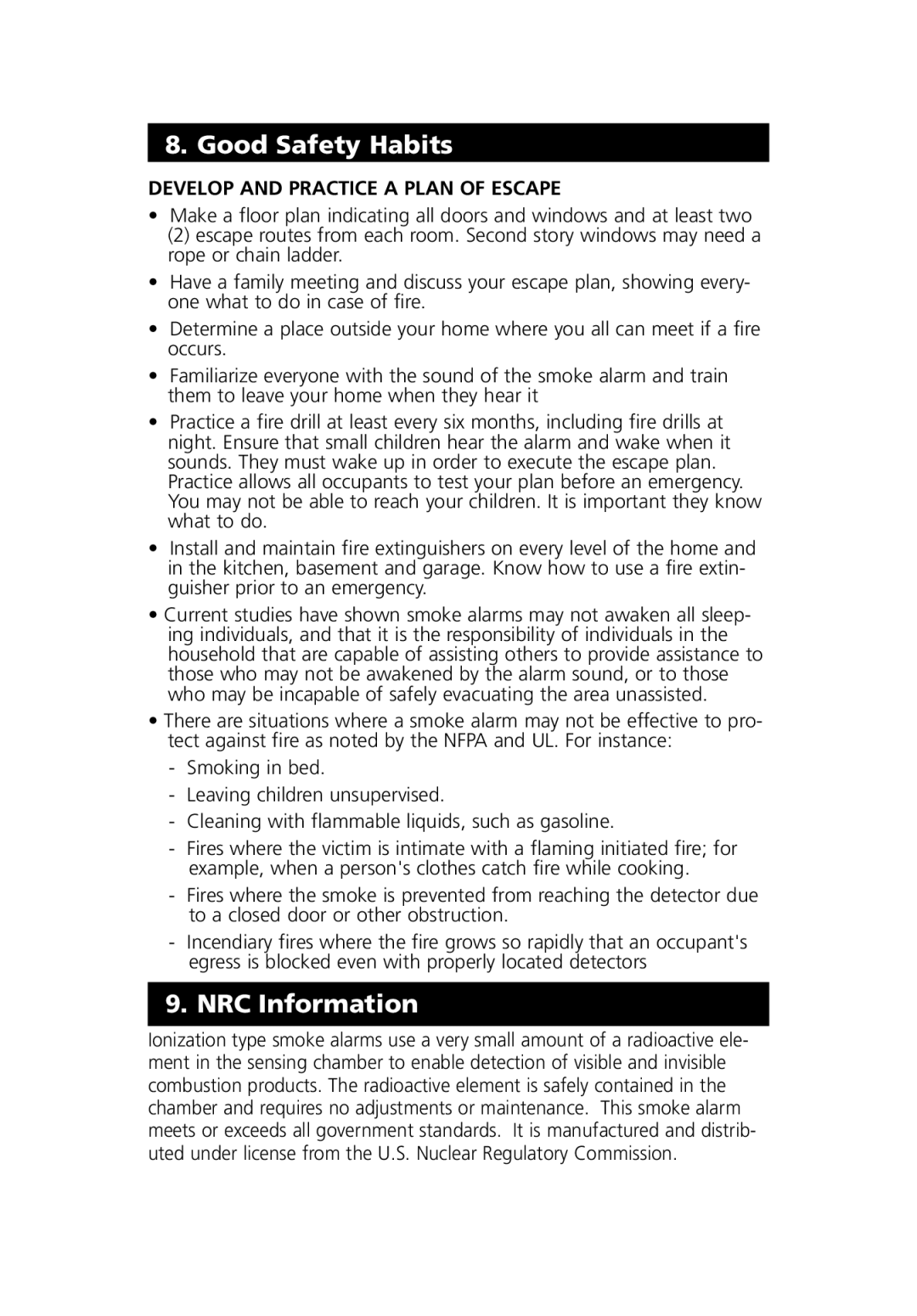
8. Good Safety Habits
DEVELOP AND PRACTICE A PLAN OF ESCAPE
•Make a floor plan indicating all doors and windows and at least two
(2) escape routes from each room. Second story windows may need a rope or chain ladder.
•Have a family meeting and discuss your escape plan, showing every- one what to do in case of fire.
•Determine a place outside your home where you all can meet if a fire occurs.
•Familiarize everyone with the sound of the smoke alarm and train them to leave your home when they hear it
•Practice a fire drill at least every six months, including fire drills at night. Ensure that small children hear the alarm and wake when it sounds. They must wake up in order to execute the escape plan.
Practice allows all occupants to test your plan before an emergency. You may not be able to reach your children. It is important they know what to do.
•Install and maintain fire extinguishers on every level of the home and in the kitchen, basement and garage. Know how to use a fire extin- guisher prior to an emergency.
•Current studies have shown smoke alarms may not awaken all sleep- ing individuals, and that it is the responsibility of individuals in the household that are capable of assisting others to provide assistance to those who may not be awakened by the alarm sound, or to those who may be incapable of safely evacuating the area unassisted.
•There are situations where a smoke alarm may not be effective to pro- tect against fire as noted by the NFPA and UL. For instance:
-Smoking in bed.
-Leaving children unsupervised.
-Cleaning with flammable liquids, such as gasoline.
-Fires where the victim is intimate with a flaming initiated fire; for example, when a person's clothes catch fire while cooking.
-Fires where the smoke is prevented from reaching the detector due to a closed door or other obstruction.
-Incendiary fires where the fire grows so rapidly that an occupant's egress is blocked even with properly located detectors
9. NRC Information
Ionization type smoke alarms use a very small amount of a radioactive ele- ment in the sensing chamber to enable detection of visible and invisible combustion products. The radioactive element is safely contained in the chamber and requires no adjustments or maintenance. This smoke alarm meets or exceeds all government standards. It is manufactured and distrib- uted under license from the U.S. Nuclear Regulatory Commission.
